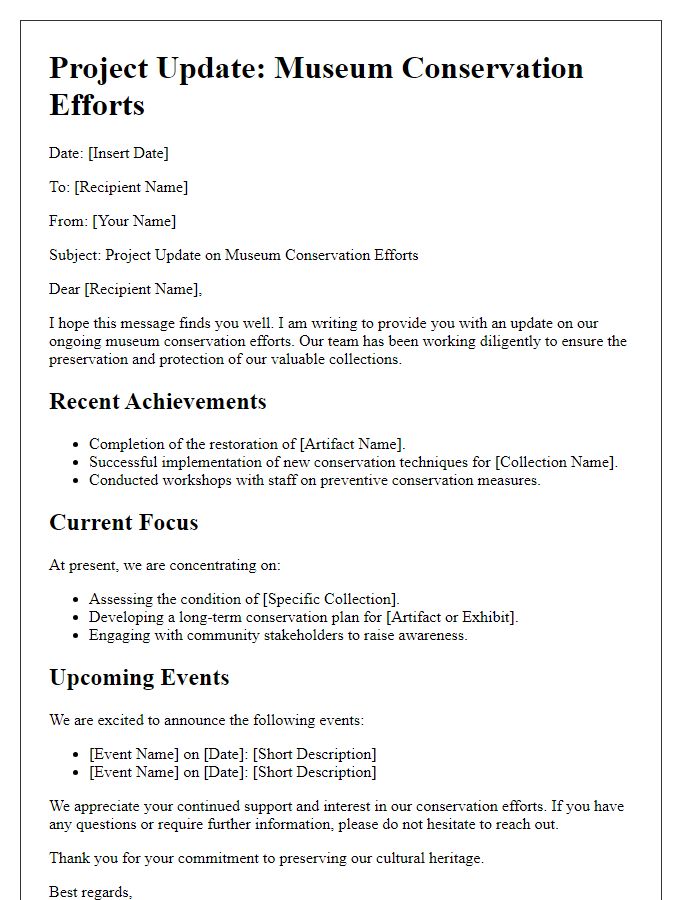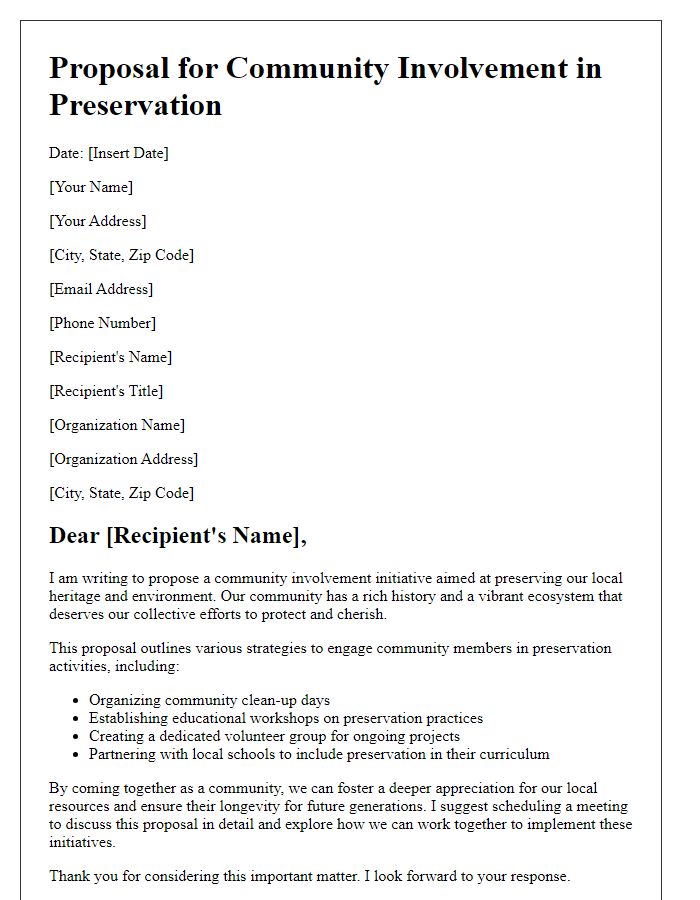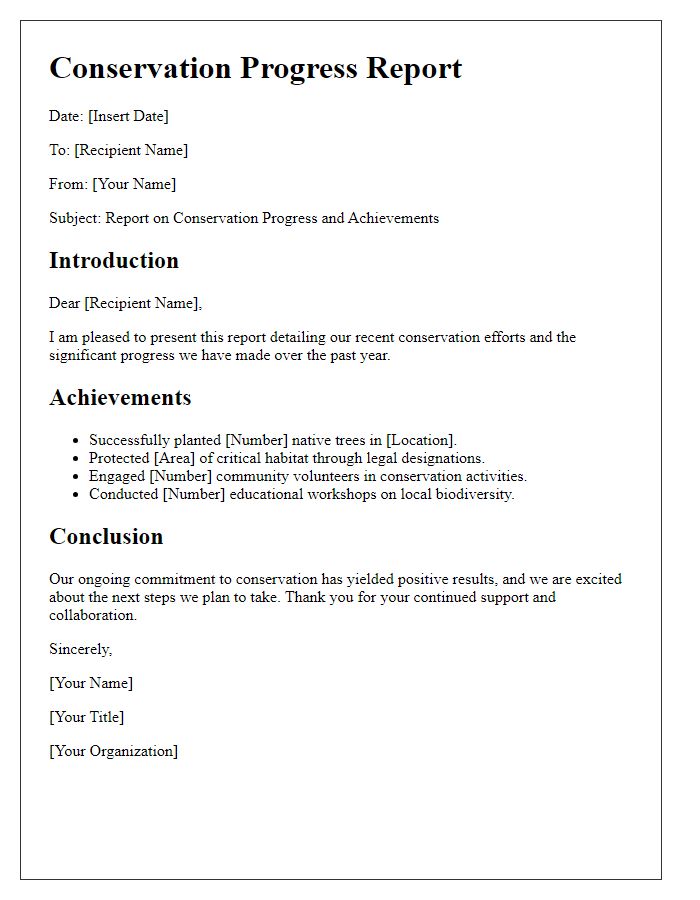Are you passionate about preserving history and culture? Museums play a vital role in safeguarding our shared heritage, but behind the scenes, dedicated conservation projects make it all possible. These projects not only restore artifacts but also ensure that future generations can appreciate the stories they hold. Curious to learn more about the fascinating world of museum conservation? Keep reading to uncover the incredible efforts behind these essential initiatives!

Clear Project Objective
A clear project objective for a museum conservation project focuses on preserving and restoring artifacts (items of historical, cultural, or artistic significance) to maintain their integrity, longevity, and cultural value. This objective involves meticulous examination of materials, techniques, and potential deterioration factors, including environmental conditions (humidity, temperature) and improper handling. The goal entails employing advanced conservation strategies, such as chemical stabilization of fragile items and the use of controlled storage environments, to safeguard collections, like ancient manuscripts or textiles. This ensures historical narratives remain intact for future generations, enhances public education, and promotes appreciation of cultural heritage through exhibitions and interactive displays. Reports on anticipated outcomes and methodologies can engage stakeholders (including local communities and educational institutions) in the significance of preservation efforts.
Budget and Resource Allocation
The successful execution of a museum conservation project relies heavily on meticulous budget and resource allocation. Essential elements include a detailed financial plan that outlines costs related to materials, such as acid-free storage boxes and archival-quality tape, which ensure the longevity of artifacts. Skilled professionals, such as conservators experienced in textile restoration or paper conservation, must be compensated fairly for their expertise, thereby requiring a portion of the budget to be allocated for labor. Additionally, technological resources must be considered, including climate-controlled storage facilities equipped with humidity sensors, which typically operate optimally at 45-55% relative humidity. It is crucial to also include contingency funds, often around 10% of the total budget, to address unforeseen circumstances such as additional repairs or emergency interventions. Effective communication with stakeholders and thorough record-keeping practices ensure transparency and sustainability throughout the project lifecycle.
Conservation Techniques and Methodologies
Conservation techniques in museums, including preventive measures and restoration practices, are essential for preserving historically significant artifacts and artworks. Methods such as environmental control focus on maintaining optimal temperature (around 20 degrees Celsius) and humidity (45-55% relative humidity) levels to prevent deterioration of materials like paper, textiles, and wood. Techniques like cleaning with soft brushes or specialized vacuums help remove dust and particulate matter without damaging delicate surfaces. Additionally, chemical treatments and consolidation processes can stabilize fragile items, extending their lifespan while adhering to ethical conservation standards set by organizations like the American Institute for Conservation. Artifacts housed in well-designed storage systems, including acid-free materials, also ensure longevity.
Timeline and Milestones
The museum conservation project encompasses a comprehensive schedule designed to ensure the preservation of invaluable artifacts housed within the National Museum of American History, established in 1964 in Washington, D.C. The timeline includes key milestones such as the initial assessment phase (scheduled for January 2024), during which conservators will evaluate approximately 150 historical items, including a 19th-century American flag and a Civil War-era uniform. Following this, the preservation phase will commence in March 2024, focusing on textile conservation techniques involving specialist materials like Teflon and conservation-grade adhesives. A mid-project review is planned for July 2024 to measure progress against established benchmarks. The final phase will culminate in an exhibition unveiling in November 2025, where restored pieces will be displayed to the public alongside educational programming designed to highlight the importance of preservation.
Stakeholder Engagement and Partnerships
Stakeholder engagement is crucial for the success of museum conservation projects, such as the restoration of historic artifacts from the 18th century. Establishing partnerships with local universities, like Stanford University, can bring expertise in materials science to ensure optimal preservation techniques. Collaborating with community groups, particularly those focused on cultural heritage preservation, fosters a shared commitment to the project and enhances public support. Securing funding from organizations like the National Endowment for the Arts can expand resources, enabling more comprehensive conservation efforts. Involving volunteers from the local community in hands-on restoration workshops not only builds skills but also promotes awareness and appreciation of the museum's collection. Effective communication strategies, such as regular stakeholder meetings and informative newsletters, keep all parties informed and engaged throughout the project lifecycle.













Comments